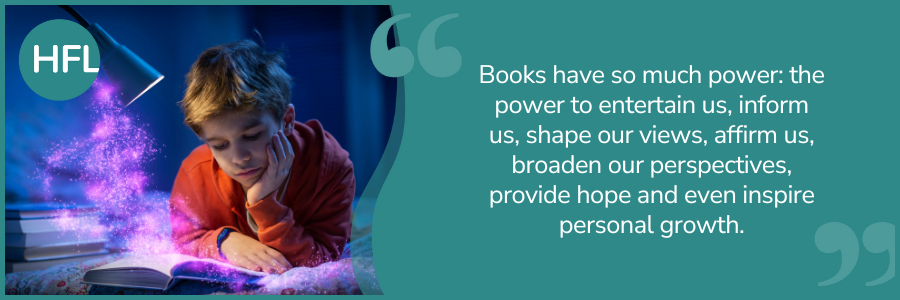
Books are sometimes windows, offering views of worlds that may be real or imagined, familiar or strange. These windows are also sliding glass doors, and readers have only to walk through in imagination to become part of whatever world has been created or recreated by the author. When lighting conditions are just right, however, a window can also be a mirror. Literature transforms human experience and reflects it back to us, and in that reflection we can see our own lives and experiences as part of the larger human experience. Reading, then, becomes a means of self-affirmation, and readers often seek their mirrors in books.
Dr. Rudine Sims Bishop
When I think about equality, diversity and inclusion in literature, this is the first quote that comes to mind. I was going to slim this down and paraphrase certain parts, but I don’t want to ‘water down’ Dr. Rudine Sims Bishop’s powerful words. Instead, I’d like to highlight just how important it is that children experience seeing themselves in the books they read, consider different perspectives, and have the opportunity to explore other lived experiences. This is an integral part in fostering a lifelong love of reading.
Books have so much power: the power to entertain us, inform us, shape our views, affirm us, broaden our perspectives, provide hope and even inspire personal growth. When we read a book that launches us into what we might call uncharted territory, or takes us outside of our comfort zone, we gain new knowledge, understanding and challenge ourselves to grow as readers. Section 7 of The Reading Framework states that ‘stories might be the only place where children meet people whose social and cultural backgrounds and values differ from their own.’ Wow! That statement alone raises many questions to reflect on:
Do the books that we use as part of our English curriculum support equality, diversity and inclusion?
Do the books in our libraries or reading corners raise cultural capital?
Which books do children encounter across the curriculum?
How are the characters represented? Is their presence meaningful, authentic, and accurate?
The centre for literacy in primary education’s sixth publication in the Reflecting Realities Report dives into the latter two questions in great detail with a spotlight on racially minoritised characters. The report and questions to guide consideration certainly offer up much food for thought. Plus, there are many high-quality book recommendations in there too.
In many of the schools that I have the pleasure of working with, conversations around equality, diversity and inclusion (EDI) in literature are continuing to grow and deepen. Thankfully, the volume of beautifully crafted literature, which supports EDI, is ever-increasing. So, let’s have a look at some of the books that we can choose from.
Out of the Blue by Robert Tregoning (Author), Stef Murphy (Illustrator)
A heartwarming and uplifting book which highlights the importance of embracing our differences and being your true and authentic self. The visually stunning illustrations cleverly portray how dull life would be if everyone was forced to be the same. If you are looking for a book which beautifully champions diversity and pride, this will certainly brighten up your collection.
I Am Nefertiti by Annemarie Anang (Author), Natelle Quek (Illustrator)
This glorious picture book authentically explores themes of identity and belonging. The heartwarming story shows us the power of being proud of your name and staying true to yourself. The author’s skilful storytelling carefully captures the lived experiences of many black and ethnic minorities. It’s a joyous read which gently highlights important themes.
Thunderboots by Naomi Jones (Author), Rebecca Ashdown (Illustrator)
This empowering book raises awareness of dyslexia. The author is honest about her own experience with dyslexia so you can tell just how personal and special this book is whilst reading. Each page is colourful and fun but still manages to shed a positive light on this common learning difficulty.
You're So Amazing! by James Catchpole (Author), Lucy Catchpole (Author), Karen George (Illustrator)
This is a lovely book, which normalises disability and improves our understanding of the challenges that a person with a disability might face. Through its humorous and light-hearted manner, it explores important subject matter and reminds us to reflect on our words even when our intention is kindness.
Not Now, Noor! by Farhana Islam (Author), Nabila Adani (Illustrator)
Not Now, Noor is a delightful book which gracefully honours women who are Muslim and provides an insight into the reasons behind wearing a hijab. It’s adorable, inclusive and informative. The vibrant colours and magnificent artwork radiate humour and happiness.
All Bodies Are Wonderful: An Inclusive Guide for Talking About You by Beth Cox
This inclusive and highly informative book presents a powerful message of acceptance. Exploring body positivity, it navigates the science behind different bodies whilst celebrating uniqueness. Each glorious page will certainly engage readers.
Hopefully, one of these beautiful books will become a mirror in which your children can recognise themselves, in your library, or a door to enter phenomenal places whilst reading at home. Do remember when choosing books, to ask yourself: ‘Do the portrayals we encounter in the literature we consume meaningfully and appropriately reflect the realities of all readers?’ CLPE Reflecting Realities - Survey of Ethnic Representation within UK Children’s Literature (November 2023)
If you’d like more inspiration for your school library, check out Books for Topics, Love Reading 4 Kids and Book Trust.




